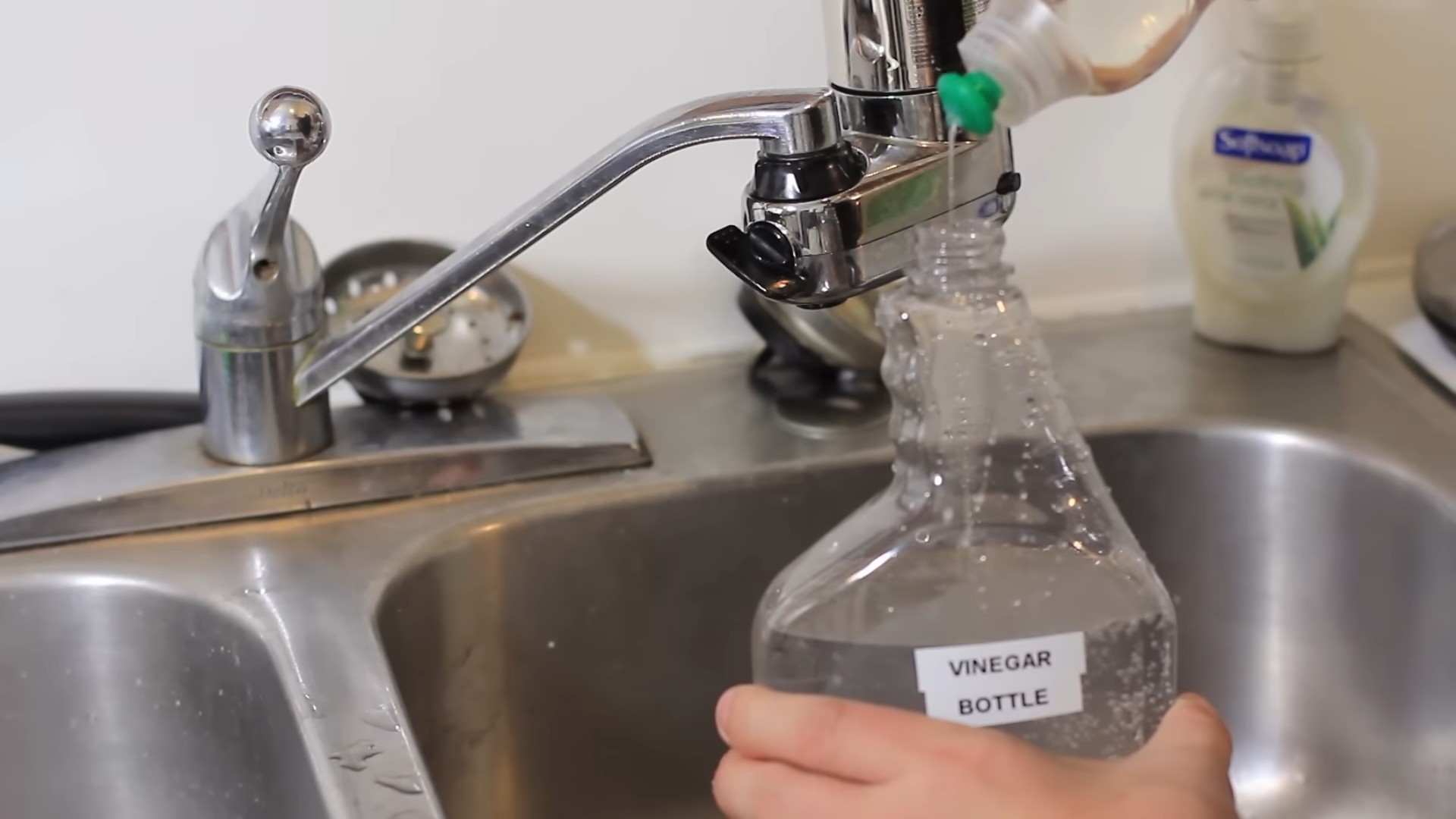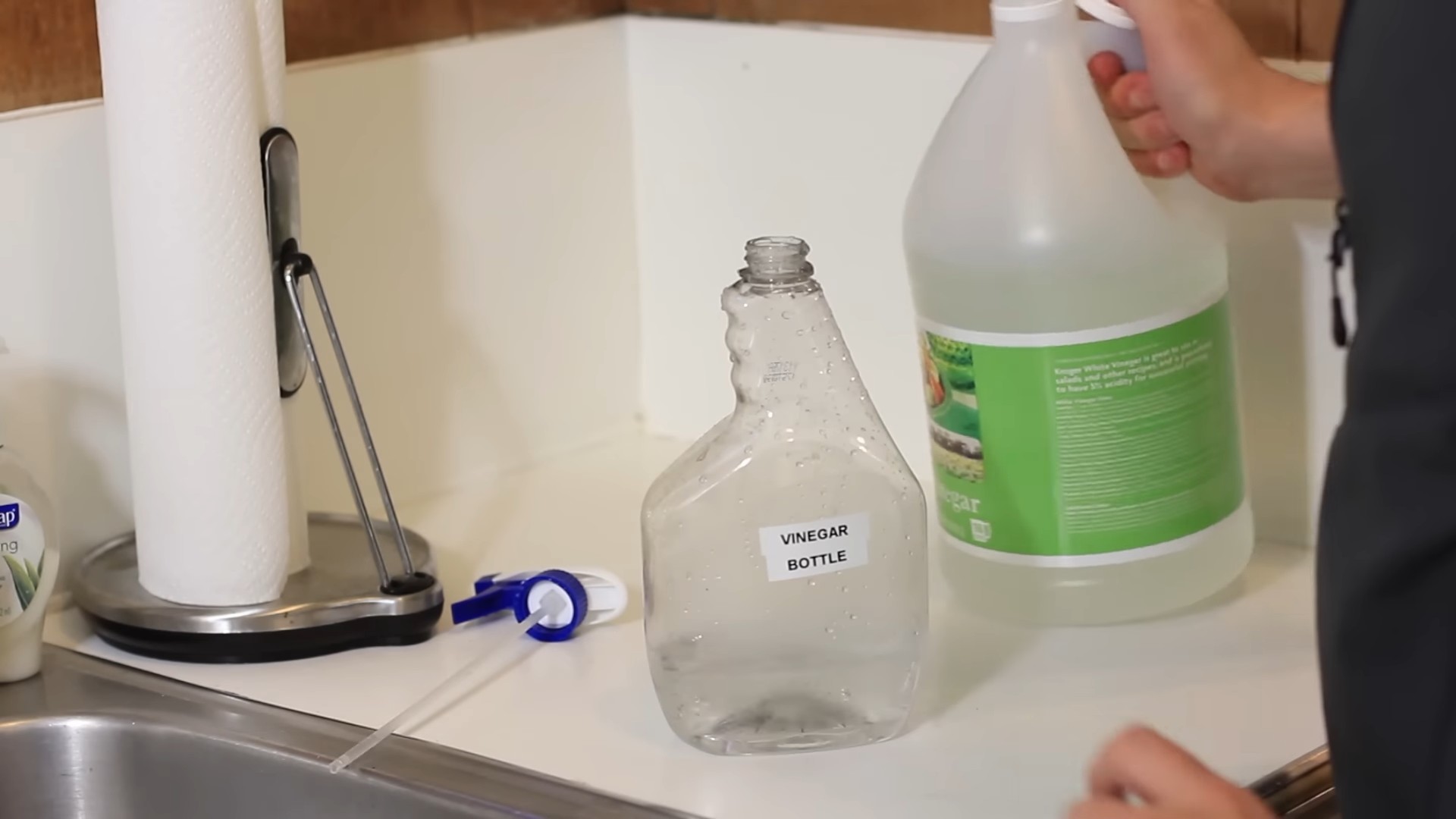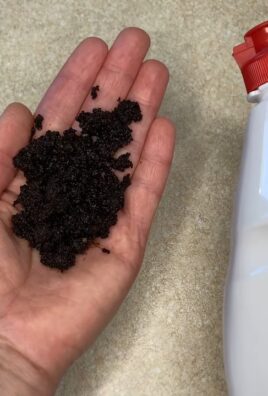Vinegar cleaning tips and tricks – who knew such a humble pantry staple could be your secret weapon to a sparkling home? I’m constantly amazed by the versatility of vinegar, and I’m excited to share some of my favorite DIY cleaning hacks with you. Forget those harsh chemicals and expensive cleaners; we’re going back to basics with a natural, effective, and budget-friendly solution.
Vinegar’s cleaning prowess isn’t exactly a new discovery. In fact, its use dates back centuries! Ancient civilizations, including the Egyptians and Romans, utilized vinegar for cleaning, disinfecting, and even medicinal purposes. They understood its power long before we had fancy, commercially produced cleaners lining our store shelves. It’s a testament to its effectiveness that it’s still a go-to solution for many today.
Why do you need these vinegar cleaning tips and tricks? Well, for starters, it’s a fantastic way to reduce your exposure to potentially harmful chemicals found in many commercial cleaning products. Plus, it’s incredibly cost-effective! A bottle of vinegar costs just a fraction of what you’d pay for specialized cleaners. But the best part? It works! From tackling stubborn stains to deodorizing your home, vinegar can handle a wide range of cleaning tasks. So, let’s dive in and discover how to harness the cleaning power of this amazing natural ingredient!

Unlocking the Cleaning Power of Vinegar: Your Ultimate DIY Guide
Hey there, fellow cleaning enthusiasts! I’m so excited to share my favorite vinegar cleaning hacks with you. Vinegar is truly a miracle worker – it’s cheap, eco-friendly, and incredibly effective at tackling a wide range of cleaning tasks around the house. Forget those harsh chemicals; let’s harness the power of this natural wonder!
Why Vinegar? The Benefits You Need to Know
Before we dive into the nitty-gritty, let’s quickly recap why vinegar is such a fantastic cleaning agent:
* It’s a natural disinfectant: Vinegar contains acetic acid, which can kill many common household bacteria and viruses.
* It’s a degreaser: Vinegar effectively cuts through grease and grime, making it perfect for kitchen cleaning.
* It’s a deodorizer: Vinegar neutralizes odors instead of just masking them, leaving your home smelling fresh.
* It’s a descaler: Vinegar dissolves mineral deposits like limescale and hard water stains.
* It’s eco-friendly: Vinegar is biodegradable and non-toxic, making it a sustainable cleaning choice.
* It’s budget-friendly: A gallon of vinegar costs just a few dollars, making it a super affordable cleaning solution.
Important Note: While vinegar is generally safe, it’s important to remember that it’s an acid. Always dilute it with water, and never mix it with bleach, as this can create toxic fumes. Also, avoid using vinegar on natural stone surfaces like marble or granite, as it can etch the stone.
General Vinegar Cleaning Solution: Your Go-To Recipe
For most cleaning tasks, a simple vinegar solution will do the trick. Here’s my go-to recipe:
* 1 part white distilled vinegar
* 1 part water
Mix these ingredients in a spray bottle, and you’re ready to clean!
Cleaning Your Kitchen with Vinegar: A Sparkling Transformation
The kitchen is often the dirtiest room in the house, but vinegar can make cleaning it a breeze.
Cleaning Kitchen Counters and Surfaces
1. Spray: Spray your vinegar solution onto the countertops, stovetop, and other surfaces.
2. Wipe: Let it sit for a few minutes to loosen any grime, then wipe clean with a damp cloth.
3. Dry: Dry the surfaces with a clean towel to prevent water spots.
Degreasing Your Oven
This is a tough one, but vinegar can help!
1. Empty the Oven: Remove all racks and any loose debris from the oven.
2. Vinegar Paste: Make a paste of baking soda and water.
3. Apply the Paste: Spread the paste all over the inside of the oven, avoiding the heating elements.
4. Spray with Vinegar: Spray the paste with your vinegar solution. The mixture will fizz.
5. Let it Sit: Let the mixture sit overnight.
6. Scrub and Wipe: The next day, scrub the oven with a sponge or brush. The grime should come off easily.
7. Rinse: Rinse thoroughly with water and dry with a clean towel.
Cleaning Your Microwave
This is one of my favorite quick cleaning hacks!
1. Vinegar Solution: Mix 1/2 cup of vinegar with 1/2 cup of water in a microwave-safe bowl.
2. Microwave: Microwave the solution for 2-3 minutes, or until it boils.
3. Let it Sit: Leave the bowl in the microwave for 5-10 minutes. The steam will loosen any splatters and grime.
4. Wipe Clean: Carefully remove the bowl and wipe the inside of the microwave clean with a damp cloth.
Cleaning Your Dishwasher
Keep your dishwasher running smoothly with this simple vinegar trick.
1. Empty Dishwasher: Make sure your dishwasher is empty.
2. Vinegar Cup: Place a cup of white distilled vinegar in the top rack of the dishwasher.
3. Run Cycle: Run a normal wash cycle.
4. Repeat Monthly: Repeat this process once a month to keep your dishwasher clean and fresh.
Bathroom Bliss: Vinegar to the Rescue
The bathroom can be a breeding ground for bacteria and grime, but vinegar can help you keep it sparkling clean.
Cleaning Showerheads
Hard water can clog showerheads, reducing water pressure. Vinegar can dissolve those mineral deposits.
1. Vinegar Bag: Fill a plastic bag with white distilled vinegar.
2. Secure Bag: Secure the bag around the showerhead with a rubber band, ensuring the showerhead is submerged in the vinegar.
3. Soak: Let it soak for at least an hour, or overnight for heavily clogged showerheads.
4. Remove and Rinse: Remove the bag and rinse the showerhead thoroughly with water.
Cleaning Toilets
Vinegar can help remove stains and odors from your toilet.
1. Pour Vinegar: Pour a cup of white distilled vinegar into the toilet bowl.
2. Let it Sit: Let it sit for at least 30 minutes, or overnight for stubborn stains.
3. Scrub: Scrub the bowl with a toilet brush.
4. Flush: Flush the toilet.
Cleaning Bathroom Tiles and Grout
Vinegar can help remove soap scum and mildew from your bathroom tiles and grout.
1. Spray: Spray your vinegar solution onto the tiles and grout.
2. Let it Sit: Let it sit for a few minutes to loosen any grime.
3. Scrub: Scrub the grout with a grout brush.
4. Wipe and Rinse: Wipe the tiles clean with a damp cloth and rinse with water.
Laundry Love: Vinegar for Fresher Clothes
Vinegar can also be used in the laundry room to boost your detergent’s cleaning power and keep your clothes smelling fresh.
Fabric Softener Alternative
Vinegar can soften clothes naturally without the use of harsh chemicals.
1. Add Vinegar: Add 1/2 cup of white distilled vinegar to the fabric softener dispenser.
2. Run Cycle: Run your washing machine as usual.
Odor Remover
Vinegar can neutralize odors in your clothes, such as sweat or mildew.
1. Soak: Soak your clothes in a solution of 1 part vinegar and 4 parts water for 30 minutes.
2. Wash: Wash your clothes as usual.
Brightening Whites
Vinegar can help brighten white clothes and remove dinginess.
1. Add Vinegar: Add 1 cup of white distilled vinegar to the washing machine along with your detergent.
2. Wash: Wash your clothes as usual.
Beyond the Basics: Unexpected Vinegar Cleaning Hacks
Here are a few more unexpected ways to use vinegar around your home:
* Cleaning Windows and Mirrors: Mix equal parts vinegar and water in a spray bottle. Spray onto windows and mirrors, then wipe clean with a microfiber cloth for a streak-free shine.
* Cleaning Coffee Makers: Fill the water reservoir with equal parts vinegar and water. Run a brewing cycle, then run two cycles with plain water to rinse.
* Cleaning Cutting Boards: Wipe cutting boards with vinegar after each use to kill bacteria and prevent odors.
* Cleaning Drains: Pour 1/2 cup of baking soda down the drain, followed by 1 cup of vinegar. Let it fizz for 30 minutes, then flush with hot water.
* Removing Stickers and Labels: Soak a cloth in vinegar and apply it to the sticker or label. Let it sit for a few minutes, then peel off the sticker.
* Reviving Leather Furniture: Mix equal parts vinegar and olive oil. Apply to leather furniture with a soft cloth, then buff to a shine.
Safety First: Important Precautions When Using Vinegar
While vinegar is a natural and effective cleaning agent, it’s important to use it safely. Here are a few precautions to keep in mind:
* Always dilute vinegar with water, especially when cleaning delicate surfaces.
* Never mix vinegar with bleach, as this can create toxic fumes.
* Avoid using vinegar on natural stone surfaces like marble or granite, as it can etch the stone.
* Test vinegar on an inconspicuous area before using it on a larger surface.
* Store vinegar in a cool, dry place away from children and pets.
* Wear gloves when cleaning with vinegar, especially if you have sensitive skin.
I hope these vinegar cleaning tips and tricks have inspired you to ditch the harsh chemicals and embrace the power of this natural cleaning wonder! Happy cleaning!

Conclusion
So, there you have it! Mastering these vinegar cleaning tips and tricks isn’t just about saving money; it’s about embracing a more sustainable and effective way to keep your home sparkling. We’ve explored how this humble pantry staple can tackle everything from stubborn hard water stains to lingering odors, all without the harsh chemicals found in many commercial cleaners.
The beauty of vinegar lies in its versatility. Feel free to experiment with different infusions. Add citrus peels to your vinegar solution for a fresh, invigorating scent. A few drops of your favorite essential oil, like lavender or tea tree, can also boost its cleaning power and leave a pleasant aroma. For tougher stains, consider creating a paste of baking soda and vinegar for extra scrubbing power. Remember to always test any cleaning solution in an inconspicuous area first, especially on delicate surfaces.
Why is this a must-try? Because it’s simple, affordable, and incredibly effective. You’re likely already have vinegar in your pantry, making it an accessible solution for a multitude of cleaning challenges. Plus, you’ll be reducing your reliance on harsh chemicals, creating a healthier environment for yourself, your family, and the planet.
We’ve covered a lot of ground, from descaling your coffee maker to revitalizing your showerhead. But the real magic happens when you put these vinegar cleaning tips and tricks into practice. Don’t be afraid to get creative and adapt these methods to your specific needs.
We’re confident that once you experience the cleaning power of vinegar, you’ll wonder how you ever lived without it. So, ditch the expensive, chemical-laden cleaners and embrace the natural cleaning prowess of vinegar.
Now it’s your turn! We encourage you to try these DIY cleaning solutions and share your experiences with us. What are your favorite vinegar cleaning hacks? What surprising uses have you discovered? Let us know in the comments below! We’re eager to hear your success stories and learn from your unique perspectives. Together, we can create a community of eco-conscious cleaners who are passionate about keeping our homes sparkling clean, naturally.
Frequently Asked Questions (FAQs)
Is vinegar safe to use on all surfaces?
No, vinegar is not safe to use on all surfaces. Its acidity can damage certain materials. Avoid using vinegar on natural stone surfaces like marble, granite, and limestone, as it can etch and dull the finish. It’s also best to avoid using vinegar on waxed wood furniture, as it can strip the wax. Unsealed grout can also be damaged by vinegar. Always test a small, inconspicuous area before applying vinegar to a larger surface. When in doubt, consult the manufacturer’s instructions for cleaning specific materials.
What type of vinegar is best for cleaning?
Distilled white vinegar is generally considered the best type of vinegar for cleaning. It’s inexpensive, readily available, and has a consistent acidity level (around 5%). While other types of vinegar, such as apple cider vinegar, can be used, they may contain impurities or have a lower acidity, making them less effective for certain cleaning tasks. The slight color of apple cider vinegar can also stain some surfaces. For most cleaning purposes, distilled white vinegar is the clear winner.
Can I mix vinegar with bleach?
Never mix vinegar with bleach! This combination creates chlorine gas, which is highly toxic and can cause serious respiratory problems, burns, and even death. Always use vinegar and bleach separately, and never in the same cleaning solution. If you’ve used bleach to clean a surface, rinse it thoroughly with water before applying vinegar. Safety should always be your top priority when cleaning.
How do I get rid of the vinegar smell after cleaning?
The vinegar smell typically dissipates within a few hours. To speed up the process, you can open windows and doors to ventilate the area. You can also add a few drops of your favorite essential oil to your vinegar cleaning solution to mask the smell. Citrus peels infused in the vinegar will also leave a fresher scent. Another trick is to place a bowl of baking soda in the room to absorb any lingering odors.
Can vinegar kill mold?
Yes, vinegar can kill mold, but it’s not as effective as some commercial mold killers. Vinegar is effective against common household molds, but it may not be strong enough to eliminate more stubborn or deeply embedded mold infestations. To use vinegar to kill mold, spray undiluted white vinegar onto the affected area and let it sit for an hour. Then, scrub the area with a brush and wipe it clean with a damp cloth. Be sure to ventilate the area well during and after cleaning. For severe mold problems, it’s best to consult with a professional mold remediation service.
How do I clean my coffee maker with vinegar?
Cleaning your coffee maker with vinegar is a simple and effective way to remove mineral buildup and improve its performance. Fill the water reservoir with a solution of equal parts white vinegar and water. Run the coffee maker through a full brewing cycle. Then, discard the vinegar solution and run the coffee maker through two or three cycles with fresh water to rinse away any remaining vinegar. This process will descale your coffee maker and leave it working like new.
Can I use vinegar to clean my washing machine?
Yes, you can use vinegar to clean your washing machine and remove detergent residue, mildew, and odors. Pour two cups of white vinegar into the detergent dispenser and run the washing machine on a hot, empty cycle. For top-loading machines, allow the machine to fill with water before adding the vinegar. You can also add a half-cup of baking soda to the drum for extra cleaning power. This will help keep your washing machine clean and fresh.
How often should I clean with vinegar?
The frequency of cleaning with vinegar depends on the specific task and your personal preferences. For general cleaning, such as wiping down countertops and cleaning floors, you can use vinegar once or twice a week. For more specific tasks, such as descaling your coffee maker or cleaning your washing machine, you can do it once a month or as needed. Regular cleaning with vinegar can help prevent the buildup of dirt, grime, and mineral deposits, keeping your home clean and healthy.
What are some other uses for vinegar in cleaning?
Vinegar has a wide range of cleaning applications beyond what we’ve already discussed. It can be used to clean windows and mirrors, remove hard water stains from showerheads and faucets, deodorize garbage disposals, clean microwave ovens, remove sticky residue from surfaces, and even freshen up laundry. Its versatility makes it a valuable tool in any cleaning arsenal.
Is vinegar an environmentally friendly cleaning option?
Yes, vinegar is considered an environmentally friendly cleaning option. It’s a natural, biodegradable substance that doesn’t contain harsh chemicals or synthetic fragrances. Using vinegar for cleaning reduces your reliance on commercial cleaning products that can contribute to pollution and harm the environment. By choosing vinegar, you’re making a conscious effort to create a healthier and more sustainable home.



Leave a Comment